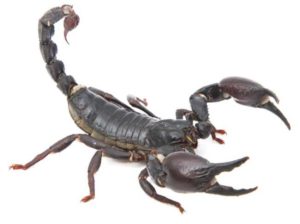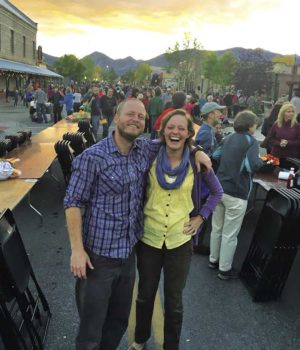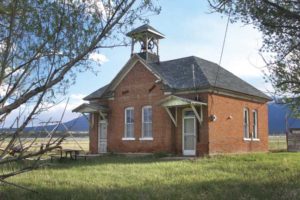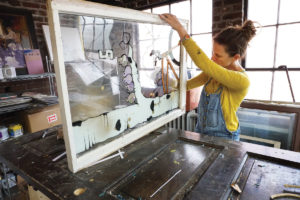I’ve been trying to figure out how and where Central Colorado – the region served (and somewhat created) by this magazine – fits into last month’s topic, “Great Divide” political geography. The Great Divide being not the physical Continental Divide but the demographic metropolitan-nonmetropolitan divide, a major factor in the 2016 election.
I’m focusing here on the headwaters part of Central Colorado, the region where mountain streams gather their waters to form the three great rivers of the American Southwest and lower Midwest: the Arkansas, the Gunnison branch of the Colorado River and the Rio Grande. In terms of counties, this includes most of Lake, Chaffee, Custer, Saguache, Mineral, Hinsdale and Gunnison Counties. In the demographer’s metro-nonmetro dichotomy, we are solidly nonmetropolitan – rural, if you prefer the older urban-rural continuum. We have only a few concentrations of people that meet the U.S. Census definition for “urban place” (2,500), and nothing remotely close to the concentration of 50,000 people required for a “metropolitan statistical area”; the entire population of these Central Colorado counties is only a little over 50,000, mostly spread thin.
But, just as the region sits astride the Continental Divide, it also seems to straddle the metro-nonmetro divide in interesting ways. This was indicated by the region’s vote tally in the presidential election. Most of the nonmetropolitan areas in the Not-Very-United States were pretty heavily pro-Trump, while the metropolitan areas were as heavily pro-Clinton; in the total national vote, Trump carried more counties (and electors) but lost the popular vote – which is what also happened overall in the headwaters counties of Central Colorado: Trump won more counties (four of the seven), but Clinton won more votes (~300).
[InContentAdTwo] The region is also not “rural” in the traditional sense of being primarily an agri-culture; most of the private land in the seven counties is under cultivation, but only about two percent of the region’s people are engaged in the traditional rural pursuits of farming, mining, logging and other primary production.* There is also very little local production of necessary goods and services; we depend on a flow of goods and services through the nearby metropolitan areas (and a dependable flow of metropolitan vacationers, students, retirees and others bringing in money for us to pay for those goods and services). Jefferson’s agrarian republic of independent farmers in locally-sufficient communities is no longer even the common vision, let alone the reality here.
But what are we, if not that traditional kind of region? That question is reflected the change in the demographic categories, from urban and rural to metropolitan and nonmetropolitan; the two categories juxtapose something defined and very present in modern society (the metropolis) with something which remains somewhat undefined – that which is not the metropolis, the nonmetropolitan.
The metropolis, like our Front Range, is more than just a city; metropolises become like suns, critical urbanized and industrialized masses exerting centripetal gravity on everything around them. Mythic historian Oswald Spengler called them “world-cities … in which the whole life of a broad region is collecting while the rest dries up.”
Whether in the metropolis or trying to fight its gravity, most people have a love-hate relationship with cities, cussing the traffic, crowding, bad air, housing costs and shortages, flagrant inequities and related social tensions, even as we enjoy the material abundance, cultural creativity (how ’bout them Broncos), and other outpourings from compressing so much human energy and activity into its nuclear fusion.
But that powerful centripetal gravity notwithstanding, demographers in the 1970s noticed a modest but unmistakable centrifugal flight from the metropolises. They called it the nonmetropolitan population turnaround: more people were moving from the metropolis to nonmetropolitan places than were going the other way in that steady century-long migration. The phenomenon disappeared in the 1980s, but surged again in the 1990s, and has persisted in the 21st century except for several years following the Great Recession.
The ebb and flow in this nonmetropolitan population turnaround overall seems to correlate with bad times and good times in the national economy. But it has been consistent and robust since the 1960s in places noted for desirable qualities – amenities – that the metropolis does not have: like open space uncluttered by human development, beautiful and relatively wild nature, natural physical or psychological challenges against which to pit oneself, quieter and less trafficky communities, et cetera. These are all the things you find in Central Colorado where, since the late 1960s, we have been trying to simultaneously cultivate that new metropolitan out-migration, and to protect ourselves and our places from too much of it.
To get to the point – the nonmetropolitan population turnaround is basically people like me, who continue to trickle individually into Central Colorado and similar amenity-ridden places every day. I came here in 1966 from an urban background to the dumpy little ex-coal town of Crested Butte with its fragile new ski area, and I thought I’d stumbled on Shangri-La, an earthly paradise. I could hike out the front door and within twenty minutes be in a place where none of the 20th century was visible! Yet half an hour down the road was a supermarket – a little smaller than Denver’s, maybe, but still regularly supplied by big trucks with goods from the entire world-city.
I suspect that many, maybe most, of this magazine’s readers and writers have similar stories – came here from the relentlessly and mindlessly growing urbs and suburbs of the forming metropolises with a vague yearning for something else, found a reasonable simulacrum of Shangri-La here, and became a nonmetropolitan – still orbiting the metropolis but trying to pull away into something else too.
We came moved by a variety of visions: some came as “back-to-the-landers” and actually found pieces of land to “homestead”; some came as artists looking for an inspiring but affordable place to work; some came as war vets looking over their shoulder; some came to retire at the literal as well as figurative end of the road; some came to get in on the ground floor of potential opportunity; and some just came because it was not like where they came from. For most of us, the closest cultural model for our own Central Colorado lives may have been not the old vision of rural America, but a more bucolic version of places like New York’s Greenwich Village or San Francisco’s North Beach. The first real hippies drifted into the Upper Gunnison valleys along with the odor of Mary Jane in the Summer of Love, 1967, the same year they were overrunning San Fran’s Haight-Ashbury.
The pattern here was finding places in decline from some previous misadventure with the 20th century’s inexorable drive and drift toward centralizing, industrializing mega-urbanism – former rural towns whose production of raw resources for the city had peaked and declined, small manufacturing cities whose industries had moved toward cheaper resources or labor, even abandoned industrial zones in the metropolises themselves. These are places where rents are low or even nonexistent when they are first discovered by the nonmetros, as are enforcements of conventional cultural rules and regulations; this attracts countercultural enclaves of what Richard Florida, an urban socioeconomic theorist who studies such places, calls “the creative class”: high bohemians including artists and writers, musicians and garage-tech wizards needing cheap places to develop their work, but also sex-and-gender variants retreating from conventional heterosexuality, and what I guess could be called “hobohemians,” young people with neither money nor career who just don’t fit the urban-industrial mainstream (me, 50 years ago).
Today, this nonmetro population has amped up considerably; instead of those somewhat ragtag types of bohemians, the region is getting more of what David Brooks (some time ago) christened “bobos” – “bourgeois bohemians”: young professionals, engineers and environmental consultants, hedge funders and other suspicious financial types, people who retain metro-connected careers but want the amenities of the nonmetropolitan lifestyle (my favorite word to hate). People who can afford the ever-escalating housing prices and tend to drive them higher. We are getting gentrified despite warnings from this magazine’s founder, who recommended having old appliances on every porch and parted-out vehicles in every yard, to keep the bobos at bay.
After half a century in Central Colorado’s headwaters, I no longer think it is Shangri-La, but I have not left in disgust either, like some old friends have, convinced that the place has been ruined by people like – well, like me, but maybe more organized, more … metro. And my disenchanted friends, on their way out of town, pass new arrivals just discovering their Shangri-La here; the place still has its magic mix of centripetal metro influence/affluence and centrifugal open-endedness.
So that is where we are – we’ve left the metropolis but are still orbiting it, still dependent on it. And what are we here? Well, “nonmetropolitans” says it. Something new under the sun, or just historical footnotes? Fleeing the world-city, or advancing it? Improving on it? We’ll see, won’t we? More to come.
* Information from headwaterseconomics.org. Headwaters Economics is not just for headwaters places; it has vast amounts of information about every county in the nation, easily accessed and compiled in tables of one’s own constructing.
George Sibley is a post-industrial, post-urban nonmetro who has spent most of the past 50 years trying to figure out where he is. If anyone knows, please contact him at george@gard-sibley.org.




